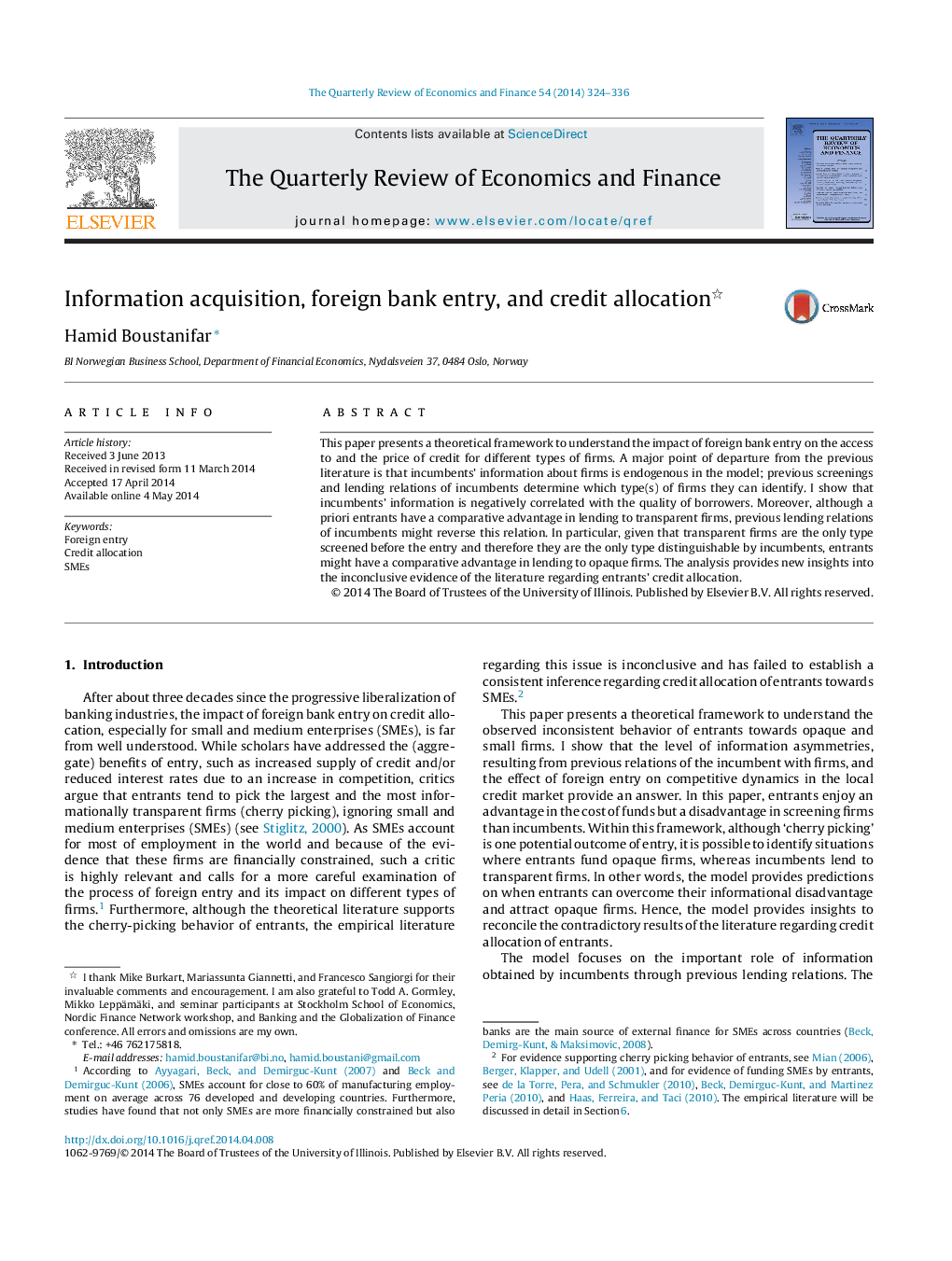| Article ID | Journal | Published Year | Pages | File Type |
|---|---|---|---|---|
| 982204 | The Quarterly Review of Economics and Finance | 2014 | 13 Pages |
•The impact of foreign bank entry on credit allocation is modeled.•Incumbents’ information about firms is endogenous in the model.•Equilibria where entrants do not cherry-pick are found.•The impact of entry on different types of firms is investigated.
This paper presents a theoretical framework to understand the impact of foreign bank entry on the access to and the price of credit for different types of firms. A major point of departure from the previous literature is that incumbents’ information about firms is endogenous in the model; previous screenings and lending relations of incumbents determine which type(s) of firms they can identify. I show that incumbents’ information is negatively correlated with the quality of borrowers. Moreover, although a priori entrants have a comparative advantage in lending to transparent firms, previous lending relations of incumbents might reverse this relation. In particular, given that transparent firms are the only type screened before the entry and therefore they are the only type distinguishable by incumbents, entrants might have a comparative advantage in lending to opaque firms. The analysis provides new insights into the inconclusive evidence of the literature regarding entrants’ credit allocation.
